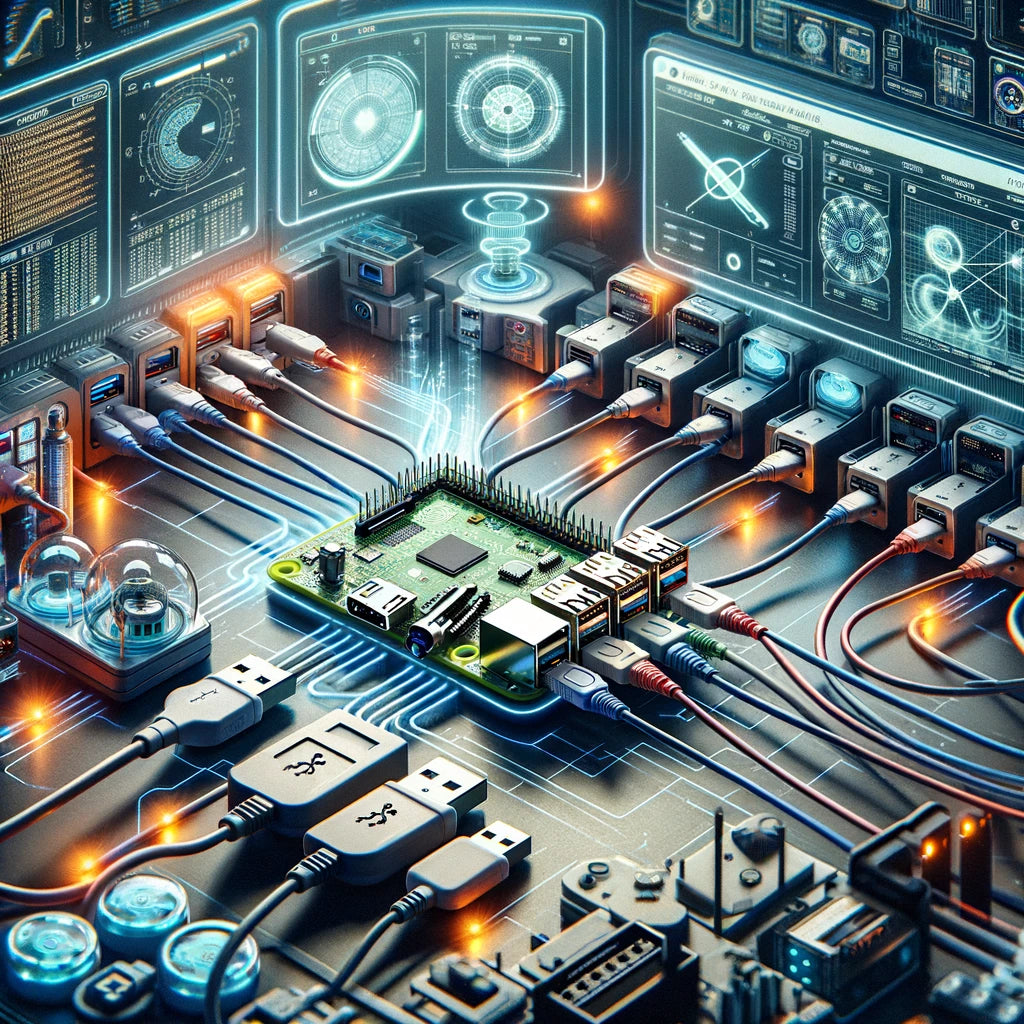Menu
Logo

Accessing USB 3.0 functionality directly from the GPIO (General Purpose Input/Output) pins on a Raspberry Pi is not feasible because USB 3.0 requires a dedicated high-speed physical layer interface that is not provided by the GPIO pins. The GPIO pins on a Raspberry Pi are designed for general input and output purposes, including interfacing with LEDs, sensors, and other devices at a much lower speed than what USB 3.0 demands.
USB 3.0 interfaces require complex signal processing and higher data rates (up to 5 Gbps for USB 3.0, compared to the much lower data rates supported by GPIO pins), along with a specific physical connector and electrical specifications. These capabilities are beyond what GPIO pins can provide.
If you need USB 3.0 functionality on a Raspberry Pi, you would typically use the USB ports provided by the board itself. Some models of Raspberry Pi, such as the Raspberry Pi 4 Model B, come equipped with USB 3.0 ports. If your project requires more USB 3.0 ports than the Raspberry Pi offers, you might consider using a USB 3.0 hub to expand the number of available USB 3.0 ports.
For projects that require interfacing with devices or systems via USB 3.0 and there's a need to control or interact with this functionality through software, you would typically do so using the operating system's USB drivers and APIs, not through direct manipulation of GPIO pins.
If you need to interface with USB 3.0 devices or expand USB 3.0 capabilities on a Raspberry Pi but can't achieve your goal directly through the GPIO pins, here are some alternative approaches you might consider:
Use Onboard USB 3.0 Ports: The simplest approach is to use the onboard USB 3.0 ports available on certain Raspberry Pi models, like the Raspberry Pi 4 Model B, which comes with USB 3.0 support. You can connect your USB 3.0 devices directly to these ports.
USB 3.0 Hub: If you require more USB 3.0 ports than what your Raspberry Pi provides, consider using a USB 3.0 hub. This can expand the number of devices you can connect simultaneously, all benefiting from USB 3.0 speed.
External USB Controllers: For more advanced use cases, consider using an external USB 3.0 controller with an interface that can be connected to the Raspberry Pi, such as via SPI, UART, or a USB 2.0 connection. While this won't provide full USB 3.0 speeds due to the limitations of these interfaces, it might offer a workaround for specific project requirements.
USB to GPIO Adapters: If your goal is to interface with GPIO devices using USB 3.0 speed, consider using USB to GPIO adapters. These adapters can offer high-speed data transfer rates to GPIO devices, albeit not at USB 3.0 speeds, but can be a practical solution for certain types of projects.
Networking Solutions: For projects where the goal is to transfer data between a Raspberry Pi and another device at high speed, consider using Ethernet or WiFi for data transfer. While not a direct replacement for USB 3.0, network connections can provide high data transfer rates suitable for many applications.
Software Solutions: Depending on your project's requirements, it might be possible to achieve your objectives through software. For instance, if you're trying to manage USB 3.0 devices from the Raspberry Pi, software tools and libraries exist that can help control and interact with USB devices over the existing USB ports.
Custom PCB or Module: For highly specialized applications, it might be worth designing a custom PCB or module that interfaces with the Raspberry Pi via one of its high-speed interfaces, like the PCIe bus on newer models. This approach is complex and requires significant electronics design expertise but could provide a tailored solution to your needs.
Choosing the right approach depends on your specific project requirements, including the type of devices you're trying to interface with, the data transfer rates you need, and how much development time and resources you're willing to invest.